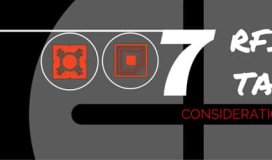1. Reduce Manual Laundry Sorting.
Hospitals, hotels, laundry facilities, or any company with multiple types of textiles have a sorting process for laundering purposes. The laundering process is usually facilitated by 2-8 people at different laundry chutes, and employees may spend hours sorting through
With an RFID laundry management system, RFID Tags are attached to each piece of laundry, and when the RFID tags move through the assembly line, an RFID Reader sends an interrogating signal and reads the tags. When each tag is read, the software determines what type of textile is being read, and directs it to the proper area or machine. The software’s findings can be displayed on a screen so that a person can immediately direct the textile or linen to its next destination.
Companies currently using RFID to help eliminate manual sorting processes are able to decrease personnel on the sorting line considerably. Instead of employing people to read the barcode or identify the linens, the only 1-2 people are required to move the item to the next process in line.
2. Provide Accurate Wash Count Records.
The laundry wash cycle per garment is an important metric, as wash cycle analytics help predict the end-of-life date for the garment. Most linens or uniforms can only withstand a certain number of high powered wash cycles before they start to wear and fray. It becomes difficult to estimate a garment’s end-of-life date with no records of wash cycle counts, which makes it hard to plan for the reordering of replacements.
When garments or linens are released from the washing machines, RFID readers detect the RFID tags sewn into the fabric. Next, the wash cycle count will be updated in the software database. When the software detects that a garment or linen is nearing its end-of-life date, the software can prompt users to reorder that type of garment or linen. This process ensures that the company always has stock of each garment or linen needed, therefore reducing lag time if one is lost or destroyed.
3. Provide Visibility Into Inventory Quickly And Easily.
Companies without visibility into their inventory cannot accurately plan for events, conduct efficient operations, or prevent lost and stolen items. If textiles are stolen, and the company does not conduct daily inventory counts, they many face potential delays in day-to-day operations due to inaccurate inventory.
RFID tags sewn into each textile help the company take inventory faster, more efficiently, and daily. RFID readers placed in each storage room take a continuous inventory to help accurately indicate where linens are lost or stolen. Counting inventory with RFID also helps companies that use an offsite laundering service. Taking inventory before the linens leave the facility as well as when they return ensures that there is no loss in the laundering process.
4. Reduce Loss and Theft.
Currently, most companies across the world are using a single, manual inventory method to try to account for lost or stolen textiles. Unfortunately, human error is present when employees are counting hundreds or thousands of textiles. When counting ceases, and the total textile count comes up short, the next step is to try and recognize where the break in the system resides. Usually, when items are stolen, there is virtually no way to find the culprit, much less get repaid or have the item returned.
Unique EPC numbers on each RFID tag enable the company to identify the exact textile lost or stolen and where it was last interrogated. If a linen or garment is taken from a specific room in a hotel or hospital, the guest can be charged for the linen which ensures that the company does not lose money.
5. Provide Meaningful Customer Information.
Companies that rent textiles have the unique opportunity to learn about their customers through the RFID tags on the rented textiles. Sewing RFID tags into textiles helps document information such as previous renter, rent date, and rent duration. Keeping these records can help the company understand item popularity, item history, and customer preferences.
6. Enable Accurate Check-In and Check-Out System.
Loaning or renting textiles can be complex unless the company instills a concise method to maintain information such as loan date, due date, customer information, and linen information. An RFID system with software can provide a custom database that not only stores the important information, but also prompts the company when the due date is nearing. A system with this capability allows companies to communicate approximate back-in-stock dates to their customers. Providing customers with approximate instead of hypothetical return dates improves customer relations and, in turn, improves textile rentals by removing unnecessary hassle.


